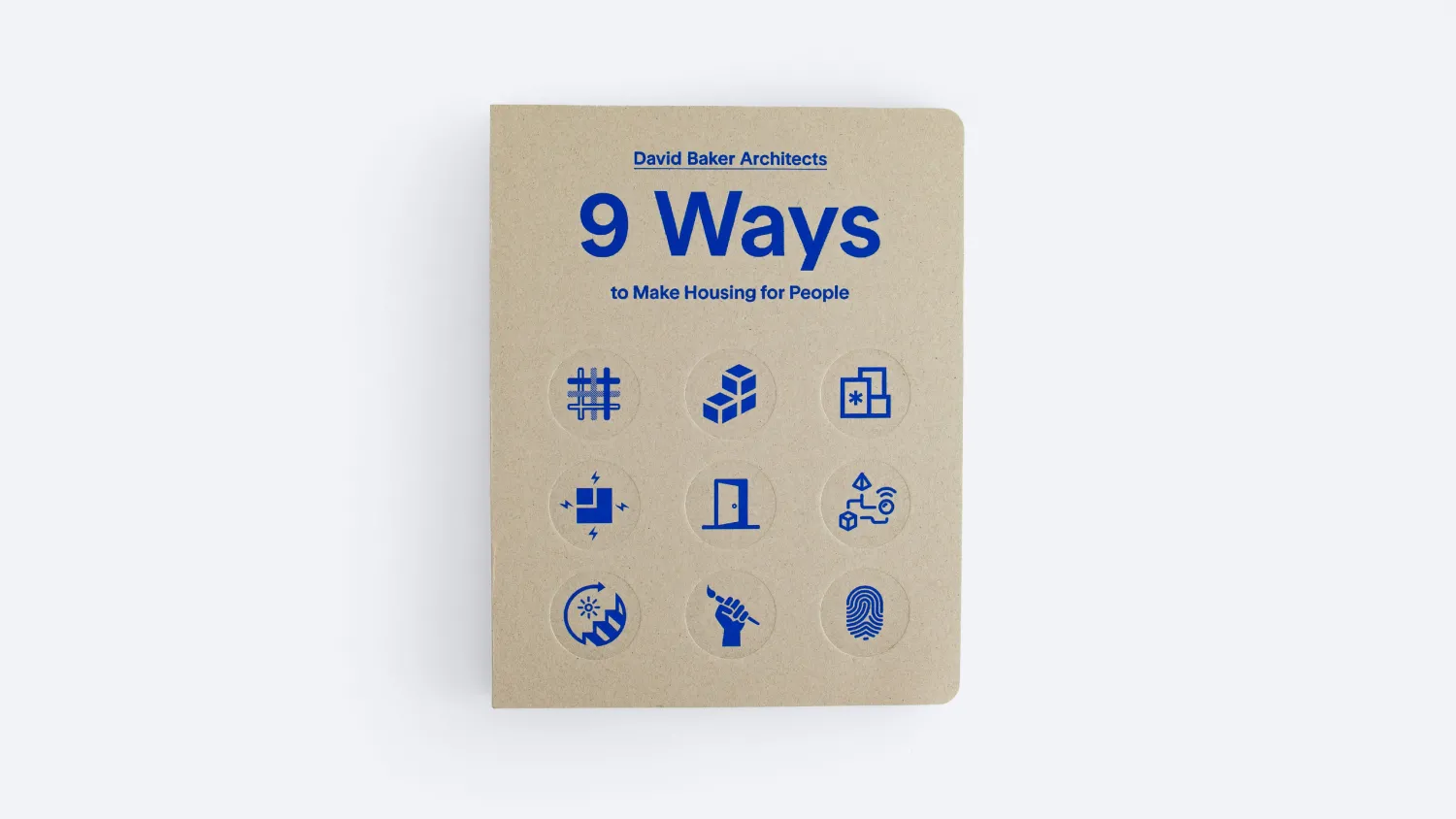
Between 2020 and 2022, 1.2 million apartment units were built in the United States, and housing remains a key development sector. Yet few recent resources exist to support the design of multifamily housing, most notably for the essential common areas that provide opportunities for both casual and formal social interaction between residents. Drawing on three decades of experience designing more than 15,000 sustainable dwellings, David Baker Architects (DBA) turns our attention to social sustainability, imparting lessons bolstered by examples from their deep portfolio. The central argument in 9 Ways to Make Housing for People is that human dignity is at the center of design. The book presents conceptual housing principles, based on the tenets of social sustainability, applicable across programs and sites.
Each chapter of 9 Ways defines and illustrates a simple tool for creating places for people. While the projects celebrate the work of one firm, collaborative practice can be read throughout each of these designs. David Baker, Amanda Loper, and Daniel Simons share authorship, and dozens of DBA designers, past and present, are listed by name. The authors’ voices and styles coalesce to explain and illustrate each of the 9 Ways: through diagrams, drawings, photos, well placed text and captions, and even an evocative narrative in the style of a graphic novel. In the foreword, editor and columnist Allison Arieff notes that DBA sees each project not as a checklist but as an invitation to riff, and this observation extends to the book itself. While the chapters are organized by scale, moving from urban decisions to building scale to interior details, there is no imperative to produce a checklist.
The intended audience for 9 Ways is flexible and wide: designers, developers, planners, housing nerds, policy wonks, community leaders, architects, and activists. One can imagine each of these constituencies advocating for social sustainability by using the catalogue of DBA projects as evidence for design excellence. The potential for application of the tools varies by chapter. For example, the first, “Reweave the Urban Fabric,” is most easily implemented by planners and policy wonks, and the last, “Get Personal,” can guide developers and property managers as new residents move in. Seven other chapters provide guidance for the design of collective housing.
I introduce 9 Ways to my students in studios and seminars to inform the analysis of precedents, to encourage students toward grounded schematic designs, and as a tool for peer critique. After reading about and discussing these tools, students can easily integrate them into their own work. For precedent analysis, I assign “Activate the Edges” and “Enlightened Circulation.” After reading each of these chapters, students can quickly assess the strengths of a built project, in person or via photographs and drawing, through the specific criteria provided. These criteria mix both prescriptive and performative recommendations, such as ground floor height recommendations in the form of diagrammatic building sections, or the practice of tracing and annotating photographs to capture the essence of a place.
In my experience, the most useful chapters in the studio are “Make Big Moves,” “Be Welcoming,” and “A Little Goes a Long Way.” “A Little Goes a Long Way” explicates DBA’s philosophy on strategic material palettes, advocating for the judicious use of enhanced exterior finishes at high-visibility locations and keeping the palette simple and refined elsewhere on the building. Photographs of recent DBA projects provide a counterpoint to the “overly spicy” building that is encouraged by many urban design review boards, and the developer-driven “unsalted” apartment buildings seen across North America.
Many other housing books inform teaching and practice, such as Housing Design: A Manual by Bernard Leupen and Harald Mooij (2011), or David Levitt and Jo McCafferty’s excellent The Housing Design Handbook (2nd edition, 2019). These books carry the advantage of providing evidence from many designers, whereas 9 Ways focuses only on DBA’s own work. But 9 Ways uses a focus on common spaces to provide designers with a bridge across urban design, architecture, and interior design. While theoretical publications abound for housing design, one of the great joys of reading 9 Ways is discovering its remarkable accessibility. Even the captions provide sophisticated analysis, and each chapter features longer essays that both contextualize the work and provide clear direction on implementation.
9 Ways will appeal to a wide range of experience levels and reaches across generations. The diagrams are stunningly lucid, and comic-book rationales are likely to support housing designers well into the future. It contributes a new array of straightforward tools without jargon or pretense and encourages others to design with these principles in their own work. It arrives at an opportune moment: to meet housing demand, the United States must create 4.3 million new apartments by 2035. Practicing and teaching with 9 Ways on the desk can help ensure these new dwellings will be both socially and environmentally sustainable.
View the full review of 9 Ways to Make Housing for People, which appeared in Journal of Architectural Education in May 2024.